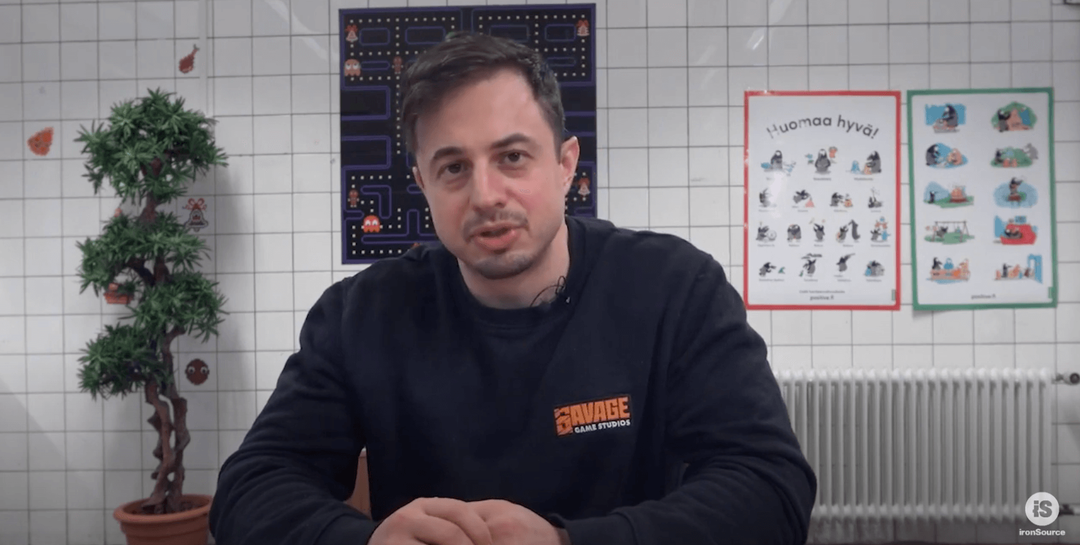Editor’s note: This article is based on Mishka Katkoff’s exclusive presentation at LevelUp 2021. Mishka is a mobile games industry veteran based in Helsinki. He’s currently the co-founder and CEO of Savage Game Studios, as well as Deconstructor of Fun.
The mobile games industry certainly had an eventful 2020, with a global pandemic, a wave of consolidation taking place, new games making a splash, and of course a certain announcement from Apple. In this blog post, based on my exclusive LevelUp2021 session, we’ll cut through the noise with a data-based analysis of the state of the industry.
Downloads and spend hit record highs
For some time now, the gaming industry has been in a phase of maturity and consolidation. In 2020, the industry enjoyed a particularly strong year: global game downloads jumped 33% year over year, from 42B to 56B. This was matched by an increase in global game consumer spend, which jumped 26% year over year from $63Bto $80B.
Meanwhile, according to Sensor Tower, the number of games in the market has stabilized: after peaking at 670K in 2016, the number of games in the Apple App Store has remained between 380K to 400K from 2018 to 2020. In fact, fewer games are being submitted to the Apple App Store. The number of submissions peaked in 2016 at 280K, and from 2018 to 2020 stayed between 70K to 80K. Interestingly, in the background of the last 3 years of stability, the hyper-casual genre blew up.
The top is getting wider
The top 100 grossing games accounted for 54% of the overall in-app purchase revenue on iOS and the Google Play Store. Taken at face value, it would seem that the industry is dominated by a small percentage of games. However, a closer look reveals that an increasing number of games are becoming sustainable, successful businesses - which I define as games that generate $10 million or more annually. The number of games reaching this milestone almost doubled between 2016 to 2020, rising from 480 to 860.
The top is also evolving
In parallel with the widening of the top, data also points to an evolution taking place. In 2019, 55% of games in the top 100 by global consumer spending had been there since January 2017. By 2020, this dropped to 26%, with 42 newcomers breaking through - up from 28 the previous year.
This suggests that new games entered the market in a big way in 2020 - despite the fact the number of new games being submitted has decreased compared to the peak years of 2015 to 2017. On top of this, the average time it took games to reach the top 100 grossing chart after launching globally fell from 9 months in 2019 to 8 months in 2020.
Putting all this data together, it seems that the top of the gaming pie is a much more even playing field than what many believe it to be.
How to break into the top 100
While the data is encouraging for developers aspiring to build successful game businesses, it is still a very competitive industry where only the strongest will survive. With that said, what does it take to succeed in today’s market?
Marketing power
Marketing power is all about your ability to launch and grow a game. This is a constant process of data crunching and optimizing your user acquisition - from your ad creatives to your bidding strategy.
Product excellence
Product excellence refers to your ability to sustain your position at the top. Part of that involves running a first class live-ops operation, launching frequent game updates and events that improve the experience, add excitement, and keep players coming back.
Diversified portfolio
Diversification means making games that cater to different audiences. This is a measure to protect yourself against market forces. If you own just one game, and let's say another game with huge resources enters your market and steals your audience, then you're in trouble. But with a diversified portfolio with games from different genres, you can protect yourself against the impact of such scenarios.
Genre mastery
Genre mastery is key for success and serves as the foundation for product excellence and marketing power. It might seem contradictory to the previous point, but there doesn’t need to be a trade-off. Many of the top publishers own several studios which focus on specific genres. In turn, these publishers are able to leverage the benefits of a diversified portfolio and genre mastery.
The mobile games market in 2020: Genre breakdown
Let's take a look back at 2020 and how each genre performed:
Casual
Casual games dominate the industry, and marked 77% of all game downloads in 2020. This dominance was also reflected in revenues: casual games generated $9.8B from in-app purchases alone in 2020, and an additional $3.8B from ads. Year-over-year IAP revenues increased by 36%, and this spending represented 38% of all IAP revenue on mobile.
Midcore
The midcore category saw just 13% of overall mobile game downloads in 2020 - but its IAP revenue of $10.4B was stronger than the casual category. Its year-over-year revenues grew by 26% in 2020, and represented 40% of all IAP revenue.
Casino
Casino games were the biggest winners during the period of Covid-19 lockdowns, generating $4.6B in IAP revenue - a 47% year-over-year jump. This figure makes up 18% of all IAP revenues, despite the fact these games get a far smaller number of downloads - just 2% of the overall mobile game downloads.
Sports
Sports is the smallest category of the four, with $1.1B in IAP revenue in 2020. This marked an impressive rise, up 30% from the previous year. Sports games generated 4% of all IAP revenues and received 8% of all downloads.
Key trends in mobile game categories
Here are some key trends we're seeing emerge in mobile gaming:
Puzzle games became the top-grossing genre
Year-over-year growth in IAP revenue for puzzle games grew 29% in the context of a shift towards using merge mechanics rather than traditional puzzles. Puzzle games also increasingly mashed different genres together, helping them appeal to a wider audience.
Hyper-casual continues to grow
Questions were raised about the sustainability of hyper-casual games, but they continued to grow and develop in 2020. An interesting trend was the shift from skill based games to feel good mechanics, in addition to the evolution of misleading ads actually becoming games. In terms of monetization, there was a shift towards hybrid strategies that combine ads with IAPs, while adding progression based elements to games that increase retention rates.
Midcore will go cross platform
The strategy and RPG sub-genres of the midcore category saw particularly impressive growth in 2020, with revenues up by 21% and 29% respectively. While these games have very loyal fan bases and strong monetization, the midcore category faces a tough task with launching and scaling games. This will have three outcomes:
- Monetization will become more diverse, for instance combining regular IAP micro-transactions with battle passes or subscriptions
- More midcore titles will collaborate with IPs, for instance AFK Arena's campaign with Assassin's Creed
- We can expect to see more cross-platform games like Genshin Impact, that are launched on multiple platforms at the same time
Casino could get even stronger
Casino games had a stellar 2020, and it could get even better. That's because US states are gradually legalizing online and mobile casino gambling. If this continues, there is potential for casino gaming companies to significantly boost revenue and disrupt the industry.
What’s next post-IDFA
As a result of the privacy changes brought about by Apple, I predict we’ll see two things happening. The first is a greater number of IP collaborations which is a strategic way for gaming companies to broaden their reach and in turn boost top of the funnel metrics like IPM.
It’s also likely we’ll see a diversification of marketing channels, beyond traditional paid user acquisition. That might include influencers, podcasts, billboards, and TV. As marketers try out more channels, I also believe we’ll see a greater use of incrementality measurement as a way to better understand the value of users. Watch this space to see in which direction the market ends up heading.
From time to time, we invite guest bloggers to post on our site. Although ironSource reviews the content for accuracy and relevance to our audience, the views, opinions and positions expressed within these guest posts are those of the author alone and do not represent those of IronSource or any subsidiary or affiliate of the same. The accuracy, completeness and validity of any statements made within each article are not guaranteed. We accept no liability for any errors, omissions or representations. The copyright of this content belongs to Michail Katkoff and any responsibility related to alleged infringement of intellectual property rights remains with them.




